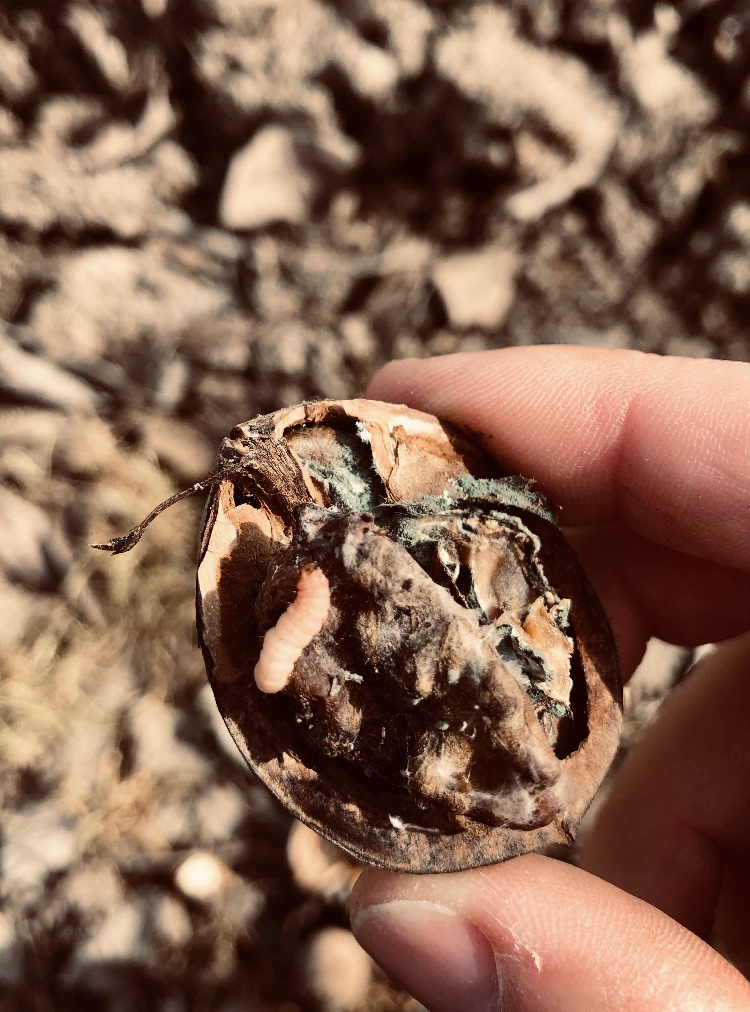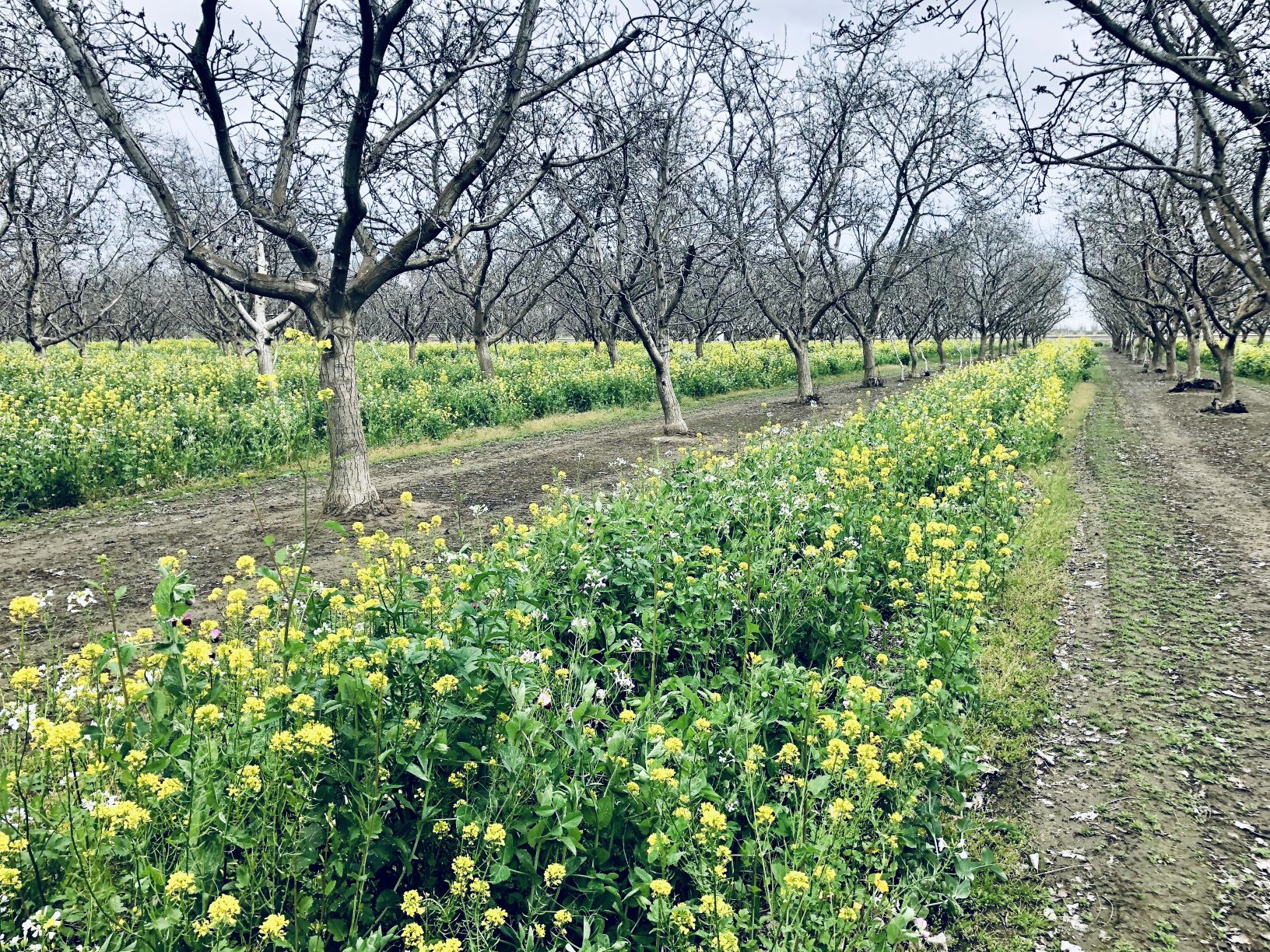
2020 was the year that changed everything. Our typical focus on bloom conditions, crop set, and spring meetings was replaced with learning COVID-19 symptoms, tracking the virus’ spread and statewide lockdowns. The worst pandemic in a century hammered our country and economy and changed nearly every routine to which we were accustomed. School drop-offs were replaced with web logins. Morning coffee still happened, but only on the tailgate in the parking lot. And millions of people learned how to order their groceries and takeout from a smartphone.
Interestingly, technology has been at the center of nearly every personal and business adaption during the pandemic. Employees working remotely, meetings and conferences, and most business with government agencies have all been heavily digitized to enable social distancing. The agriculture industry has been no exception. Fewer lunches with vendors and more communication by email and web meetings has been standard in 2020.
Although technology enabled huge transformations in how work got done for other industries, it seems like this is less true in the agriculture industry. Despite marketing by some ag tech firms about COVID-19 being the reason for growers to finally “go digital”, it is likely that the industry will continue its tradition of careful, measured adoption of technology. After reflecting on how our industry responded to the new realities of 2020, here are a few insights for the benefit of those working in the ag tech space and their potential customers.
The Crop Waits for No One
There is no other way to put it. All crops, including tree nuts, are programmed to respond to their environment, and when conditions are right, they try their best to grow a canopy and harvestable crop. It does not matter if the farmer finishes spraying weeds, pruning, renewing the pesticide permit or if a global pandemic is happening. The crop waits for no one. The same is true of pests. Navel orangeworm will devour your crop and alternaria will defoliate your trees if your monitoring and treatments are not timely. Growers and agronomists cannot afford to get behind schedule because it is practically impossible to catch up.
While it is accurate, agriculture professionals do not need to be told they are essential workers. Because of the relentless progression of the crop, high risk of crop failure and livelihoods dependent on a successful harvest, field work has to continue even during a pandemic. That is why one of their most valuable commodities is time.
That is also the reason some ag tech ventures are unsuccessful. Though digitizing every farm record, delivering satellite imagery every week and collecting soil moisture data on every field would be amazing, professionals have limited time and cannot afford technology that delays their essential work. As a young PCA, I remember testing new mobile trapping software almost a decade ago. After only a few weeks of mapping fields, locating traps and collecting trap counts, I calculated the process required an additional 1 min for each trap compared to my paper and pen or spreadsheet methods. That could result in an additional hour of work each day!
If you are selling ag tech or just considering a purchase, carefully answer the following questions to make sure the new technology does not impede your essential work:
Has it been field-tested in actual operating conditions?
What are the initial and long-term time burdens on the customer?
How could this burden be reduced to prevent fatigue and frustration by the user?

A Lifetime of Experience
Many growers have spent their entire life working in the industry as well as their parents and perhaps grandparents. Over the years, they have regularly encountered difficult events, from hailstorms to commodity price crashes, and kept moving forward. That resilience is another reason the agriculture industry does not grind to a halt when something like COVID-19 arrives. The world needs food, and they have survived hard times before, so they press on even though there is uncertainty.
Experience not only builds resilience, but it also accumulates an incredible amount of knowledge, such as knowledge of the soils and water, the crop and specific varieties, pest cycles and problem spots, and even technology that has come and gone over the years.
One of the best orchard managers I have ever encountered never had a computer or tablet, and if he had his way, would probably have ditched the cell phone as well. Instead, he relied on a good memory, carefully written notes and plans, and asked subject matter experts questions when he did not have the answer. His notebooks never lost charge, dropped their signal or needed technical support.
The data contained in a lifetime of experience is hard to analyze or condense into an algorithm. The resiliency developed can instill ways of doing things that are hard to change, even during difficult times. Do not discount these characteristics that are shared by many growers and agronomists when developing or marketing ag tech products. Instead, work hard to understand their perspectives and identify the real needs by asking some of these questions about the product or service:
How significantly will the customer need to adjust their practices to adopt it?
Does it provide new insights or only confirm the grower’s observations and experience?
What new pain points might it introduce?
In It for the Long Haul
Farming, and tree nuts specifically, is a long-term investment. Growers put in a tremendous amount of resources over several years just to reach the first commercial harvest, and then strive to extend the orchard’s productivity for as long as possible. Commodity and input prices fluctuate, global trade wars come and go, and political power shifts one way or the other many times during the life of an orchard. As we have experienced in 2020, pandemics explode onto the global scene and give cause for concern. However, growers will continue producing their crop because they are in it for the long haul.
Ag tech investment strategies and cycles are not always aligned with the same long-term perspective. It may be difficult for venture capital investors to wait for a return while a technology company tests its product and adapts to the market. Commodity prices can affect growers’ willingness to invest in new technology. The industry has also observed ag tech companies being acquired, filing for bankruptcy or shifting their focus after an unsuccessful launch. In light of these potential misalignments, consider the following strategic questions about an ag tech offering or company:
What is the history and long-term strategy of the company?
Is it venture capital funded? Are they positioning for a buyout?
Is its pricing responsive to market conditions?
Has it been fully tested and proven, or are the first customers helping with product development?
Forecasting the Future
There is no doubt that growers are adopting more agriculture technologies on their farms, from drip irrigation to pump controls and automated sprayers. Conditions in 2020 may have even accelerated the pace of adoption.
But if the industry’s response to the global pandemic has taught us anything, it is that agriculture is resilient and adapts to whatever gets thrown at it. Growers need new technology, but from partners that are responsive to their actual needs and also in it for the long haul, just as they are.











